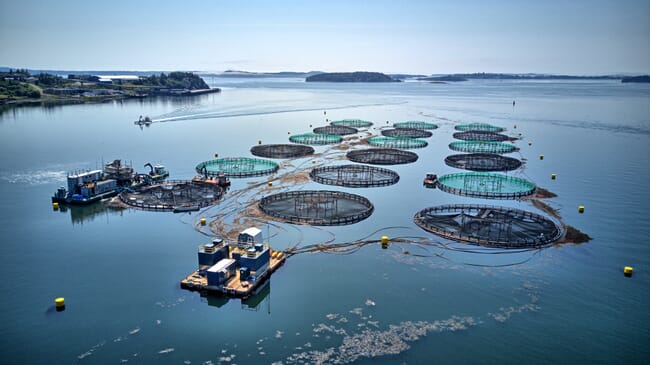
© Shutterstock
A new eDNA approach for monitoring the seabed conditions around marine fish farms could significantly speed up the assessment of sediment samples, enabling salmon producers and the Scottish Environment Protection Agency (SEPA) to gather timely, accurate information to demonstrate environmental impact.
Marine benthic invertebrates, which dwell in and upon the sea floor, can act as useful indicators of ecosystem health and, as such, are often used by researchers to assess the impacts of human activities, such as fish farming, on the benthos. However, benthic monitoring has historically relied on the manual identification of invertebrates, which is extremely time consuming, often taking up to three days to complete just one sample and costing the aquaculture sector an estimated £1 million per year.
“Demonstrating good environmental performance at our sites is critical, both for our customers and for compliance reasons. At the moment, we sample the seabed followed by sieving and sorting sediment to identify species, but it is a time-consuming, labour-intensive process that hasn’t been updated for 30 years or so,” said Stephen Macintyre, head of environment at Mowi Scotland, in a press release.
Seeking to revolutionise this process, a collaborative project including the Sustainable Aquaculture Innovation Centre (SAIC), the University of Highlands and Islands, and the Scottish Association for Marine Science (SAMS), amongst other organisations, has led to the development of a new eDNA approach to benthic assessment.
The researchers have used metabarcoding – a technique that cross-references samples against a sequence database to identify different species - to identify thousands of bacterial species simultaneously.
After gathering a sample, the bacteria present in the sediment is first characterised by DNA sequencing, with a machine learning model then applied to predict the health of the invertebrate community based on the bacteria. The Infaunal Quality Index – a well-established ecological quality benchmark – is then used to classify the health of the invertebrate community.
“This project has been years in the making and it is great to see the results of a long-term collaboration between the sector, academia, and regulators having the potential to transform a key aspect of aquaculture monitoring. eDNA sampling could provide widespread benefits to both the aquaculture sector and its regulators, with potential for this approach to be adopted across the globe by seafood producing nations. Armed with data, producers can be better informed to make decisions around key environmental and fish health factors influenced by the seabed,” said Sarah Riddle, SAIC director of innovation and engagement.
Samples analysed using the new method are now being presented to SEPA for validation, with standard operating procedures and an open-source toolkit also being created for anyone in the sector to use.




